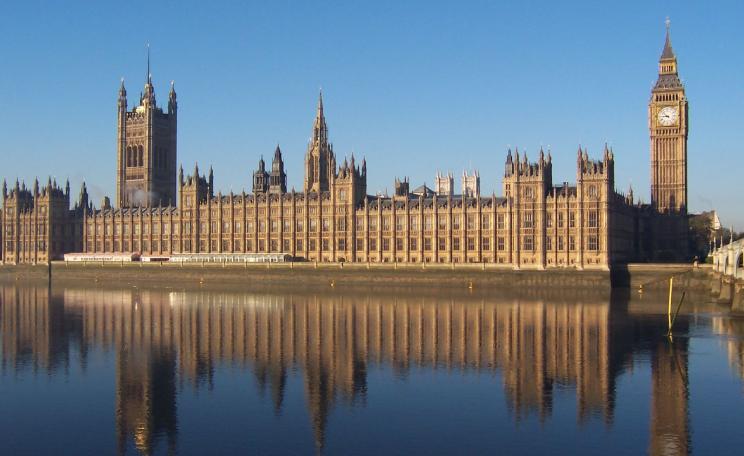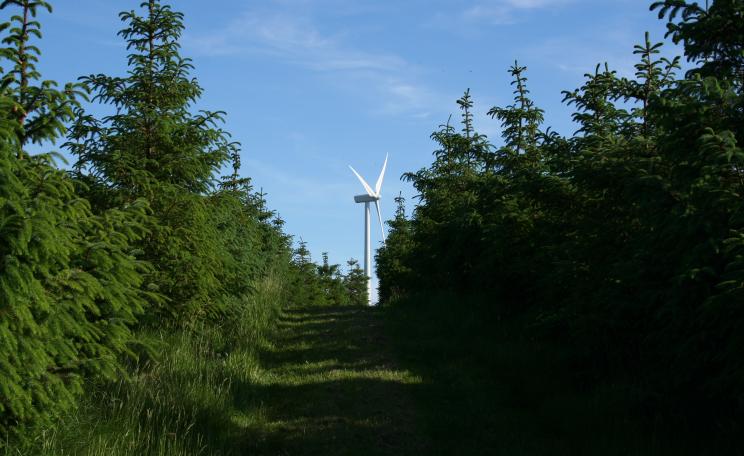A climate protest at the JP Morgan offices in Canary Wharf, London. The chunky knitwear, smell of Patchouli, communal lunches and tired, expectant faces. It’s Thursday, 19 October 2023 at one of the Oily Money Out (OMO) direct actions organised by Fossil Free London, which has flourished in the late Extinction Rebellion (XR) ecosystem.
Greta Thunberg is the focus of the media’s attention, having been arrested two days earlier blocking an oil conference taking place at the Intercontinental Hotel on Park Lane. Her presence has meant a few hundred activists have received global coverage. The yellow smoke of a flare. The block-print flags. “Change your diet to save the climate: eat the rich.”
Medical Aid for Palestinians is responding to the current emergency in Gaza. It has launched an emergency appeal to 'ensure that Palestinian health workers have the medical resources they need, as soon as possible'. You can donate to the appeal online.
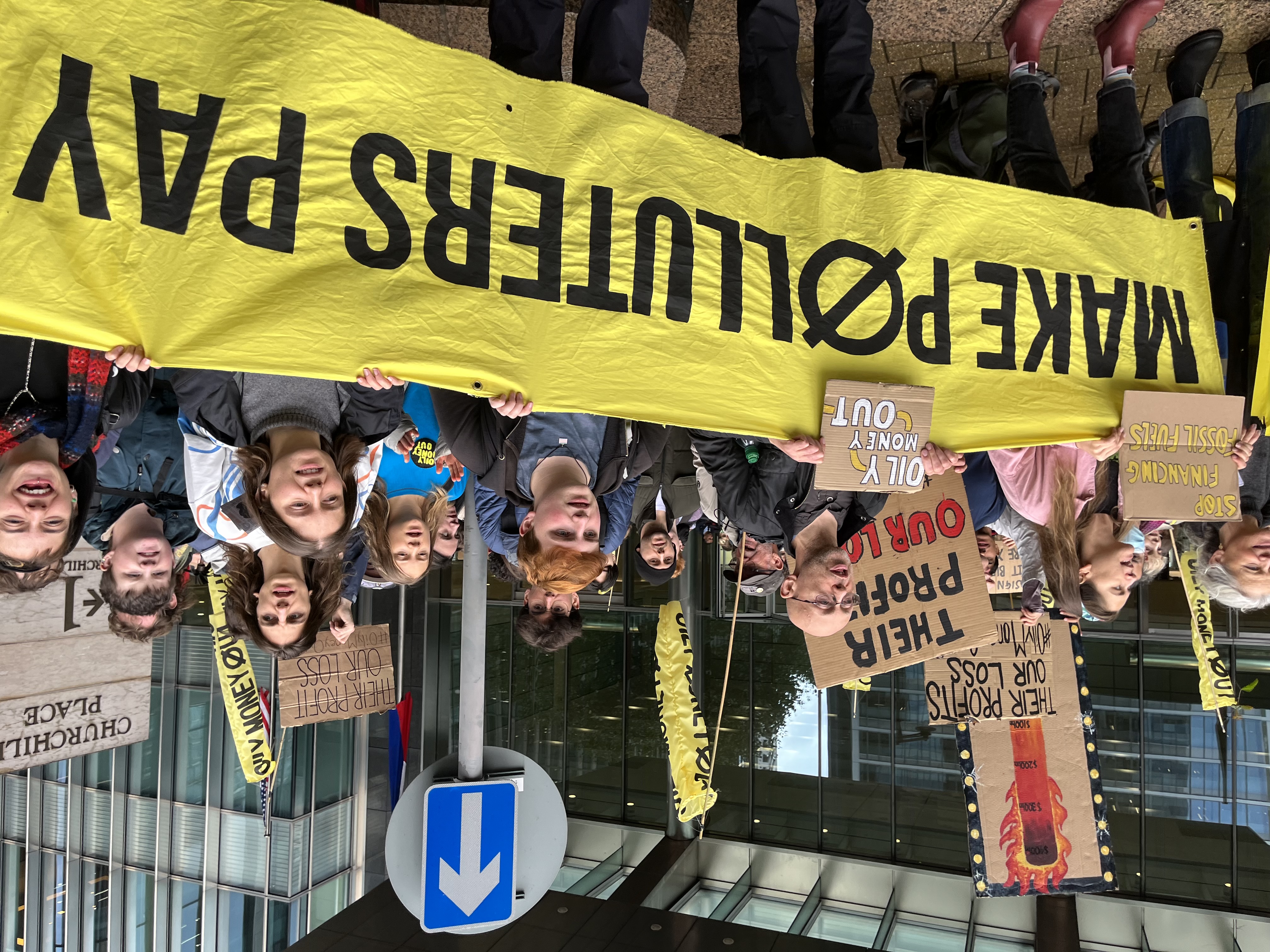
Just two days later at Marble Arch, less than fifteen minutes walk from the Intercontinental Hotel, an estimated 300,000 people gathered for one of the largest protests in London’s history. The Saturday demonstration had been organised in less than a week - and will be surpassed the following week by a crowd of 500,000 marchers.
Unite
These huge demonstrations are demanding a ceasefire in Gaza. This is just one such manifestation taking place around the world. The crowds are here in sorrow and in anger - the mood is buoyant but serious. Jewish protesters hold handmade signs calling for peace. Parents hold their children close. There are keffiyehs and red-green-black-white flags. “From the river to the sea, Palestine will be free.”

The climate and the Palestine protests take place in the same week and on the same streets - but are reported and widely understood as being entirely separate. I supported the Reclaim the Streets protests in the 1990s. I have been an active peace and climate protester for decades. I travelled to Gaza and the West Bank in 2002 with a delegation of students and education workers to meet their Palestinian counterparts. That whole time the two movements seemed to be happening in different domains.
But now, finally, this is changing. Just this Saturday, Fossil Free London strategically protested both oil and gas and the bombardment of Gaza at one and the same time, (see main image). Clare Hymer, deputy head of articles at Novara Media, reported from the protest: “Climate activists are outside the London offices of Ithaca Energy, owned by the Israeli petroleum conglomerate Delek Group, which both part-owns oil fields in the North Sea and furthers illegal Israeli settlements in the West Bank.”
This is a highly significant event. The success of each campaign is dependent on its ability to unite with the other. The slogan “environmental justice is social justice is economic justice” needs to be reflected in our protests on the street. This will allow activists calling for a ceasefire in Gaza to learn from the developments in the climate movement over the last five years - and of course, vice versa. But these strategically smart interventions need mass support.
Indeed, the fear that the climate movement and the Palestine movement will unite and share lessons has clearly already frightened the agents of war and destruction. Thunberg, who began her climate protests as a teenager, posted to X her call for people to “stand with Gaza”. She was immediately subjected to allegations of anti-semitism by the Israeli state. The activist was told by X trolls to “stay in your lane” - the aim being to ensure other high profile activists do likewise.
There are clear differences between the Gaza and the climate campaigns. But understanding these differences can aid both movements.
 Million-strong
Million-strong
The fundamental difference between the three Palestine protests and three climate protests I observed during this extraordinary week in October is best understood through Italian theorist Antonio Gramsci’s concept of the war of manoeuvre and the war of position. These militaristic terms were transposed into movement analysis to describe how different strategies are needed for those times when events are moving fast and progress is rapid, and other times when dogged and seemingly unwinnable campaigns have to be fought. Those calling for a ceasefire in Gaza today are experiencing a war of manoeuvre.
The immediate reasons for this stark difference are: the shock of the new; the pain of intended harm, the plausibility of change. The shock and disgust at the Israeli’s military's slaughter of the innocents in Gaza resulted in hundreds of thousands taking to the streets in cities around the world. Politicians are mollifying voters after first supporting Israel uncritically.
The global protests for Palestine are a result of the simple shock of the Israeli onslaught, the fact that the death and destruction taking place is a deliberate human act, and the belief that by taking part in the demonstrations we might actually be able to end the violence and save lives. This seems concrete: very immediate and obvious.
The Palestine Solidarity Campaign has called for a “million march for Palestine” demonstration in London on Saturday, 11 November 2023. The belief, as always, is that the sheer size and scale of such a protest will cause political leaders to change course, both in the UK and internationally. Sunak and Starmer will both be forced to call for a ceasefire and use diplomatic pressure to get the Israeli government to kill fewer civilians. The resignations of Labour councillors resulting in the loss of control of several councils for Starmer’s opposition has been made possible by the public show of support for the cause.
But the pain remains from the ultimate failure of the million-strong marches in London and other capitals in 2003 to actually “Stop the War”. Tony Blair held his nerve, just. The invasion of Iraq that followed resulted in the deaths of an estimated one million people in the Middle East. The organisers at that time argued against mass direct action. The Grand Old Duke of York strategy failed. One outcome was a long period of disillusionment among many peace campaigners in the power of the mass protest.
Ungovernable
Back to today. Russia’s invasion of Ukraine less than two years ago provoked a similar if smaller outpouring of popular concern in the UK. But this has already flatlined into grim acclimatisation. A similar process took place after Thunberg and others launched XR onto the climate scene precisely five years ago. The huge disruptive demonstrations dwindled - and this time thousands of activists were left with criminal convictions. The marches are not meant to be cathartic, they are meant to be impactful.
Vincent Bevins has just published If We Burn: The Mass Protest Decade and the Missing Revolution. The book focuses on the Arab Spring, and the following popular movements in Brazil and Occupy Wall Street in the United States. His question is bold and timely. Why do mass protest movements fail - or worse, end up with precisely the opposite of what they set out to achieve.
Bevins joined the 500,000-people march in London in October. He sees the efficacy in the march as literally demonstrating the strength of feeling among the population, the voters, to world leaders. But he also sees it as a “photo opportunity” and the result of the mass media age. He argues that if movements are to succeed then they need to build institutions, practise democracy, and work especially hard during downturns.
The lessons from leading campaigners across those years of boom and bust are summarised by Bevins in The Guardian as follows: “If the goal is to put pressure on existing elites, then strikes and boycotts often work much better than people walking back and forth across a city. If enough leverage is created to make demands, then someone must represent the group and negotiate the victories. If the existing elites can actually be removed – a revolutionary situation – then some group must be prepared to take their place and do a better job.”
One specific answer to the problem of people power is to now deliberately manage the Palestine movement’s transition from its war of manoeuvre to one of attrition. This can be done by learning the lessons of how XR managed a decline in attendance, moving from the radical flank threatening to make capital cities ungovernable to seeding campaigns which are smarter, more strategic and still impactful.
Bonanza
Specifically, the mass participation at demonstrations needs to be translated into well attended and targeted direct actions that actually impede the UK economy, including its arms economy, and forces politicians to support a ceasefire. This involves painstaking work, turning attendance into data and donations, data into newsletters and information sharing, and finally identifying those activists willing to take the most risk and bringing them together to undertake strategic interventions.
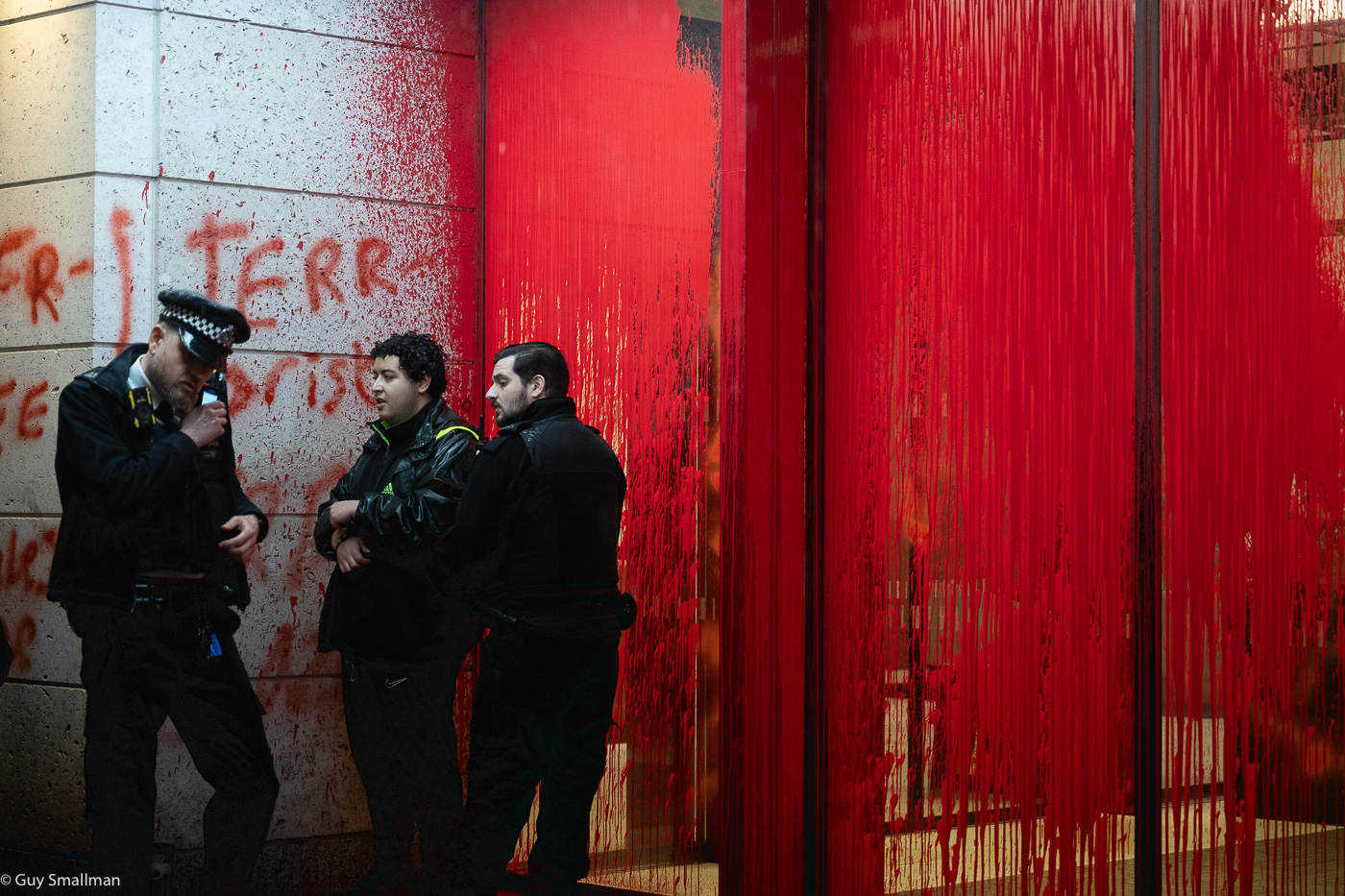
The peace and the climate movements have common cause. If we are to have any kind of future we need to establish democratic control of the world’s fossil fuel reserves. We need to keep these in the ground. This means contesting power in the geographical sites where coal, oil and gas are found - mostly places where oligarchical power resides and indigenous and working class communities are oppressed.
The fate of all of humanity will be decided in the next decade by those who control the use of coal, oil and gas: the fate of the children in Gaza tonight has been decided by those who have controlled those same fossil fuels during the last decade. We live in an epoch of crude determinism. The long arc of history as well as apparent shocks and isolated events will be defined by the control of energy - and will define the success of both the environmental and social justice movements.
There are specific and significant changes in the global fossil fuel economy that have become extremely relevant now. Firstly, the US has become a net exporter rather than importer of fossil fuels as a result of the fracking boom. Its need for Israel is far less acute, and that might become even more true. How long can Israel depend on the US? Conversely, Israel has gained economic independence through its weapons and intelligence experts - no doubt helped by the fact it has discovered its own vast reserves of natural gas in the Mediterranean sea. It is far less dependent on the US for hard cash, and therefore more resistant to diplomatic arm twisting.
Indeed, geologists confirmed in August 2019 that “sizable reservoirs of oil and natural gas wealth” have been discovered in the West Bank and immediately off the coast of Gaza. The natural gas in the Levant Basin is understood to be as much as 122 trillion cubic foot with oil reserves of 1.7 billion barrels. These combined could have a value of $524 billion. The United Nations Conference on Trade and Development (UNCTAD) naively assumed the bonanza would “promote peace and cooperation among old belligerents”.
Reservoir
Correlation is not causation. I have no special access to the thinking of military planners of any nation. I do not believe in Israeli exceptionalism. The point that can be made is that the most extreme elements in the political and military leadership of Israel are now calling for Palestinians to be forcibly evicted from Gaza and into tent cities in the Sinai deserts of Egypt. If this were the outcome of this war, the oil spoils would be enormous.
This of course would not be the first war resulting in the transfer of fossil fuel wealth from one country to another - and it’s not the only one currently ongoing either.
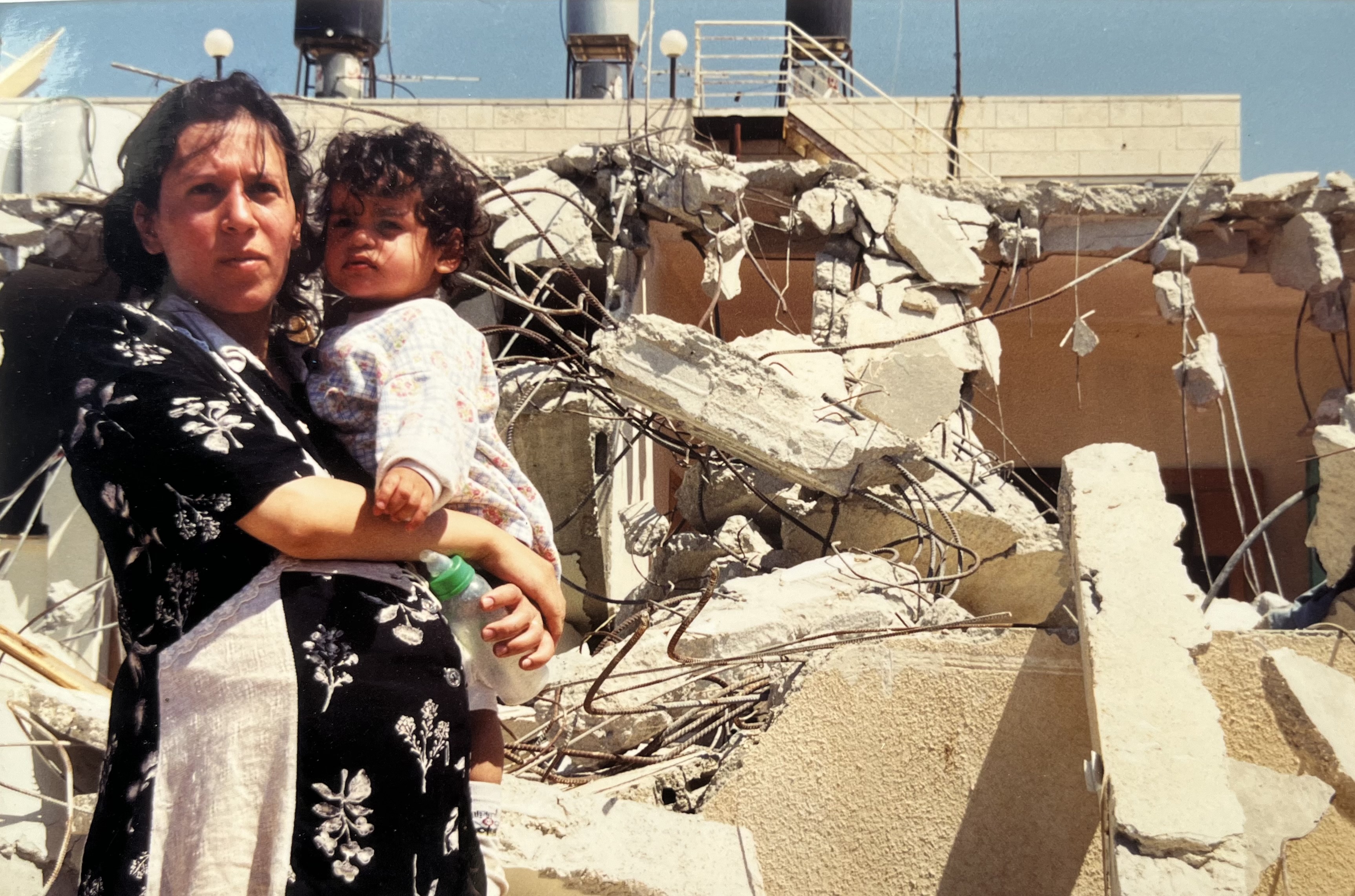
The support of the United States for Israel, including billions in arms shipments and subsidies, has also clearly been understood as about the geopolitics of fossil fuel energy. A reliable ally in the Middle East certainly helped during the Iraq war - and following attacks on other countries across the region. Israel has ensured the US has untouchable military bases in the region - alongside the additional services of generally helping to ensure permanent chaos and disunity among rival and competing members of Organization of the Petroleum Exporting Countries (OPEC).
War is complex and will have multiple drivers. But any military planner will have to assess how to fuel its engagement. The politicians will have to weigh the costs and benefits. Securing access to and control over oil especially, but any energy resources, will always be part of this equation. The Iraq war in 2003 was often discussed in terms of oil. Saddam Hussein had invaded Kuwait to control its oil fields, and threatened to start trading crude in Euros rather than dollars. The United States formed a coalition of oil dependent countries and invaded: democracy was never restored but the control of the vast reservoirs of cheap fossil fuels certainly was.
And then today there is Ukraine. We can see how the discovery of oil and gas was immediately followed by the current era of civil unrest, invasion and occupation. A huge reservoir of gas was discovered in the Black Sea south of Crimea in early 2012. The Law of the Sea Treaty of 1982 meant that Ukraine was entitled to the enormous fossil fuel bounty, sitting less than 200 nautical miles south of its coastline.
Tectonic
The Ukraine government signed an accord with Exxon and other oil majors to invest $12 billion exploiting the reserves. Ukraine had been part of the Soviet Union and its government remained loyal to, and dependent on, neighbouring Russia. But in February 2014 president Viktor Yanukovych was deposed in a popular uprising named the Revolution of Dignity. Russia responded by invading and occupying the Crimean Peninsula a month later - and, in its view, securing the rights to the new Black Sea bounty.
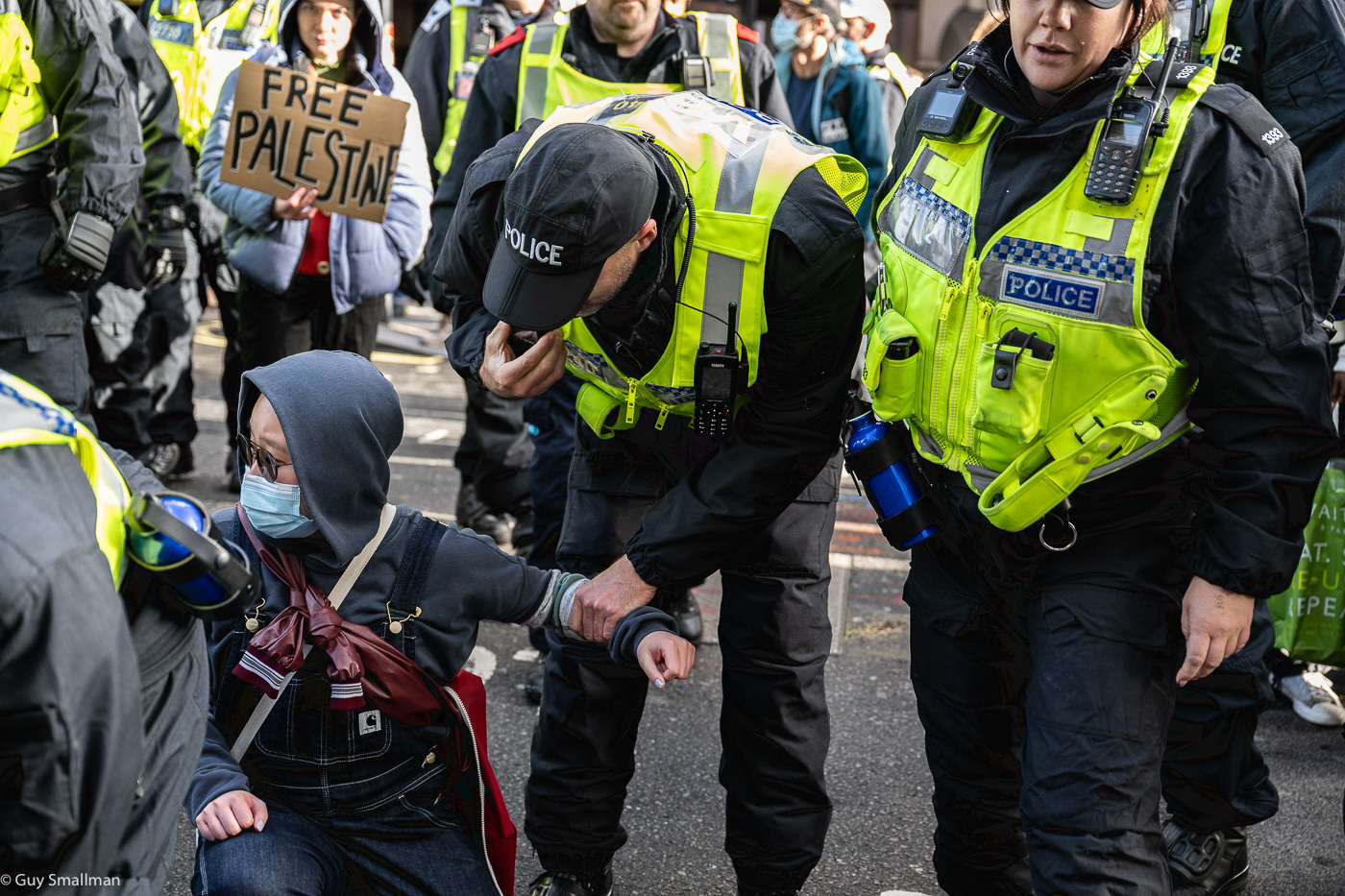
There are a thousand reasons why Russia invaded Ukraine in February 2022. The military assault included war crimes, crimes against humanity. But the argument put out by the US and by the UK Government and its intelligence services, that Putin had simply gone a bit mad during the Covid lockdown, is not convincing. The claim that NATO had encroached on the former Soviet Union too aggressively, freaking out Moscow’s military strategy elite, makes more sense.
But in any case, whoever “wins” the current war in Ukraine will take control over the extraordinary wealth newly discovered in the Black Sea and the neighbouring Azov Sea. The reserves are so large that some have compared them to the North Sea discovery of the 1970s that enriched the people of Norway and filled British offshore bank accounts. The idea that oil was the motive of the Russian invasion was described by Gilles Lericolais, then director of European and international affairs at France’s state oceanographic group, as “so obvious”. Was it also a motive for European countries?
The concept of the resource curse is not new. We see over and over again that indigenous or local populations are destroyed by the discovery of natural resources - and in particular coal, oil and gas, under their lands. We can see both Ukraine and Palestine as being earthquakes along a fault line between the US and its allies and China and Russia and their allies for control of the world’s dwindling and increasingly expensive fossil fuel resources.
Like an earthquake, there are unique and unpredictable local reasons for any event and the population’s response, but the actual cause and the future is determined by movements of high tectonic plates below the ground. If we take the Israeli bombardment and possible annexation of Gaza and the Russian bombardment and annexation of eastern Ukraine as two sides to the same coin we can also see that any movement for peace needs to be the same movement as the campaign to prevent climate breakdown.
Meticulously
We cannot avoid the fact that the campaign for peace and the campaign for climate action both confront overwhelming opposition: the power of the vested interests in war and oil, and war for oil, is colossal. And we have to acknowledge that we are by any measure losing on both fronts. The transition from a war of attrition to a war of manoeuvre is inevitable - but that does not mean there is no hope for the future.

At the microscale, the peace movement would also do well to learn from the practical lessons and new techniques developed by the climate movement. To the outside world, XR may have dwindled into insignificance. But the reality is the protest group has allowed a thousand flowers to bloom with a proliferation of more highly advanced and sophisticated groups. This includes Just Stop Oil, Animal Rebellion and many, many more.
The most inspiring of therefore me right now is Fossil Free London who, by chance, had organised the series of direct actions in London that would coincide with the Palestinian demonstrations. The Oily Money Out (OMO) campaign targeted the oil executives most responsible for climate breakdown, it leveraged Greta Thunberg’s willingness to be arrested to gain global media attention, and also allowed participants to engage in direct action where it was most effective.
The OMO protests were premeditated and meticulously planned, rather than a fast moving response to global events. This meant that alongside the actual protests there were a series of talks and training - deepening the understanding and the confidence of those who chose to engage in the protests.
The workshops ranged from the practical, with a thorough educational about the legal rights of protesters and the reality of how the police might forcefully shut down the campaign both in real time and after the event, to the theoretical, with training about how capital is the driver of climate breakdown and therefore, according to the speaker, how workers as the producers of capital are best placed to stop the exhaustion of our natural world.
Rehearsal
The sophistication of the OMO protests is the result, a necessity, of the inevitable decline of XR. It is the sum total of a thousand discussions about inclusivity, about how general disruption hurts most those with the least control over the use of fossil fuels. Moreover, it allowed participants to take the highest level of risk they felt able to. Some marched, some abseiled buildings, others blocked the conference doorways until they were taken to the police cells.
Excitingly, the peace movement is already adopting more direct action than during any previous period. This has come both from the environmental justice and also the social justice movements. The “technology” of protest has advanced and is being used by activists on the ground.
The sit-ins by Jewish campaigners at Grand Central Station in New York, US, in late October inspired the feminist direct action group Sisters Uncut to lead a sit-in at Waterloo Station during an A to B demonstration in the UK - and successfully reprise the tactic with thousands joining a protest at Liverpool Street station in the last few days. There have been direct actions at arms manufacturers in Bristol, while workers blockaded a Kent factory supplying the Israeli military.
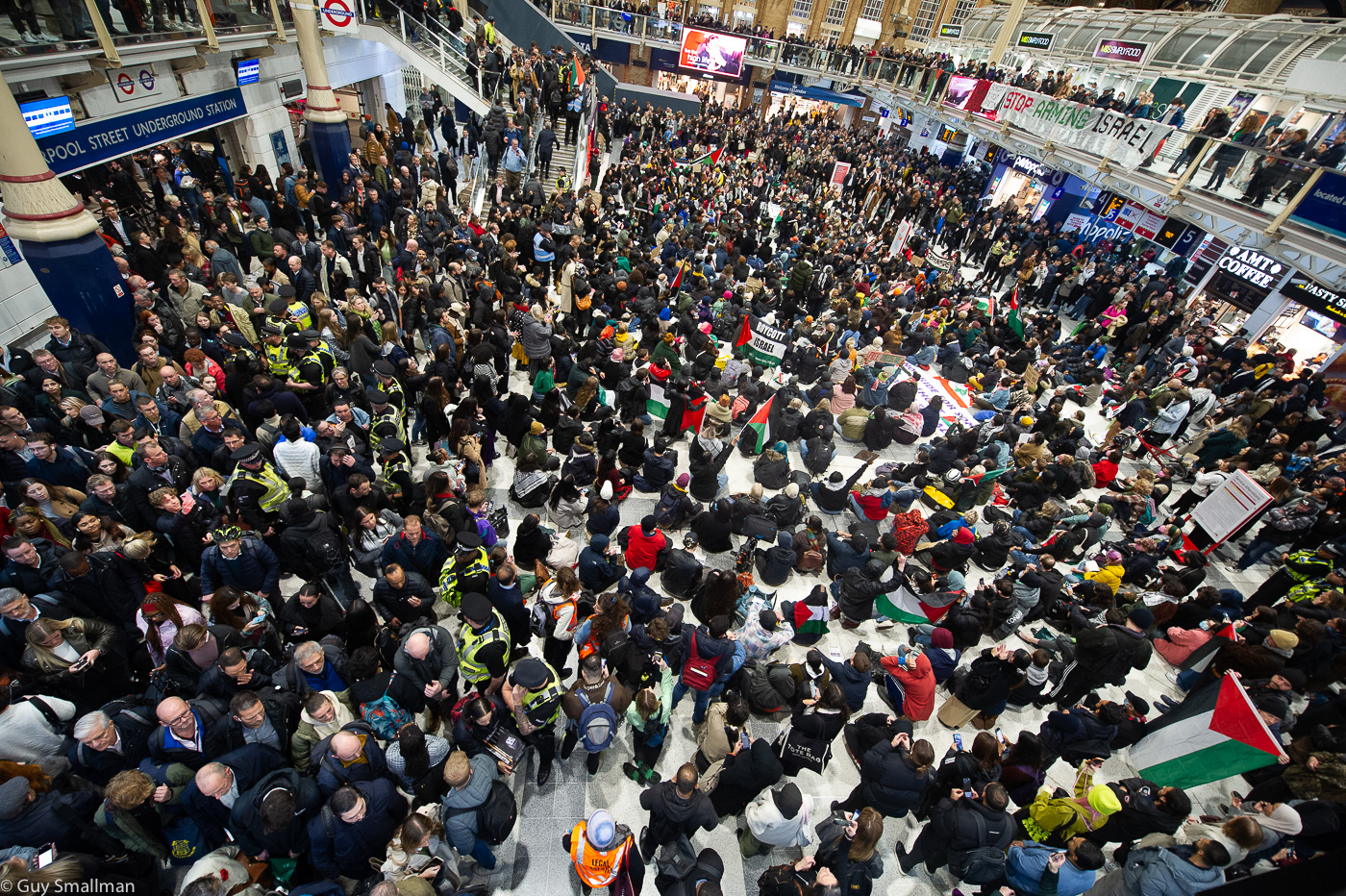
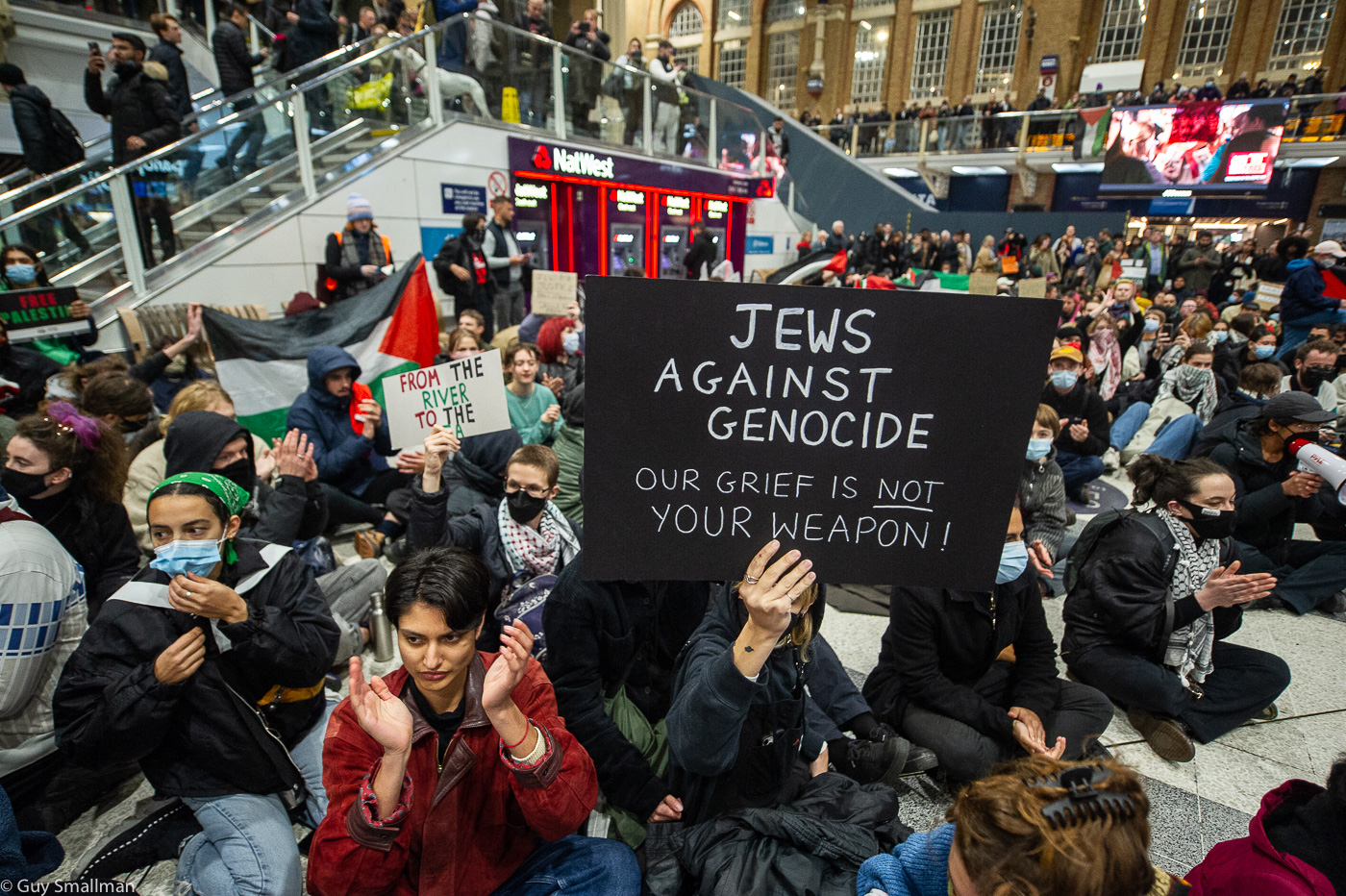
We should not abandon the mass demonstration. But nor should we stop marchers from transitioning to direct action. Neil Rogall, a veteran campaigner and author of Israel: The Making of a Racist State, told one group of activists: “We really shouldn’t counterpose mass demos and direct action.
“In the middle of a horror such as now, mass demos are a way of showing how big the opposition to genocide is, both to ourselves and to the state. They break down the isolation that it is so easy to feel with the barrage of lies coming from the media and government, and create a sense of solidarity and unity amongst people from diverse backgrounds. John Berger pointed out so long ago they are a symbolic rehearsal for something much bigger.”
Finite
He added: “Direct action is never going to involve the numbers of people of mass demonstrations - not everyone is in a position to do it because of disability, age, family responsibilities, job insecurity in the face of witch hunts. But they provide both practical means of disrupting the war effort, symbolic disruption and provide a necessary outlet for rage that can turn inward or to the wrong target, and can inspire wider layers to begin to take action by attending demonstrations.”
“Of course the highest level of direct action is strikes in the industries of the war effort by workers on the job. Both forms of action go together to build the widest level of involvement and activity to disrupt and protest the genocide taking place before our eyes.”

Ashok Kumar, the author of Monopsony Capitalism, has been following event closely on X. He reported late last night: “Following the three biggest unions in Belgium refusing to move arms to Israel, the Union of Dock Workers in Barcelona (OEPB) from today will refuse to move any ships containing weapons for Israel.”
So what does the future hold? Is there hope? The principle of peace along the distress at seeing people even thousands of miles away having to ensure such horrors, will not diminish. At the same time, the hardship brought on people less attentive to global affairs - another spike in energy bills, continued inflation and the entirety of the cost of living crisis, will drain away any support for endless wars.
It is hard these days not to think of George Orwell’s 1984. The banality of using a blunted razor while the coffee, sold in shrinking bags, is almost out. The cost of living crises bites ever harder. The constant claim that individual terrorists are the cause of our hardship, while the state pretends to protect. We can no longer escape into news of elsewhere. The never ending war - between two ill defined not-so-super powers. The mundanity of humanity’s decay.
The reality is that capitalism was always going to drive us to the very abyss. There can, we have said for half a century now, not be infinite growth on a finite planet. The point of capitalism is no one actor is in control, there is no monarch or institution that can turn off the oil.
Immediacy
But what we have seen is that capitalist destruction, war, can ignite a global movement for peace populated by millions of activists within hours. At the same time, the climate protesters have shown that big rises and falls in engagement can be transformed into long term, persistent, pervasive campaigns. It does now feel possible now that the spark and the fuel exist to bring about a fundamental transformation in world affairs - what is necessary might suddenly and finally become possible.
The upsurge in the movement caused by the horrors of Gaza offers a glimmer of hope that protest movements can evolve into systemic change. In the longer term, there is so much the climate movement needs to learn from the peace movement. The most important of which is the sheer longevity of the struggle ahead, and the extremely violent measures a military is willing to go to protect its interests. The fact that the leaders of the “free world” have so eagerly defended war crimes against a civilian population, a defenceless and caged population, is chilling in the extreme. It is meant to be.
The climate protests conversely can learn from the success, both historically and in recent weeks, of the peace movement. The most important thing to consider is that the climate, and environmental threats more generally, have been framed as being about far off threats, in the future, about polar bears: entirely abstract.
The continued exploitation of oil must be understood as a deliberate act by a few that will cause untold misery to millions, billions, of people around the world. The climate activist community has therefore had to work hard to build shock and immediacy into their messaging, and have had some success in maintaining campaign momentum over months, years, decades.
What we have seen in the last few eventful weeks is a movement of millions can come into existence in the blink of an eye. The possibility that a global movement for systemic change can arrive before climate breakdown is baked in remains just that - a real possibility.
This Author
Brendan Montague is the editor of The Ecologist online. Medical Aid for Palestinians is responding to the current emergency in Gaza. It has launched an emergency appeal to 'ensure that Palestinian health workers have the medical resources they need, as soon as possible'. You can donate to the appeal online.


